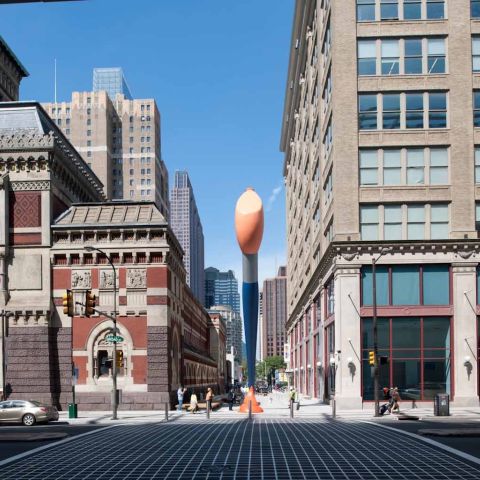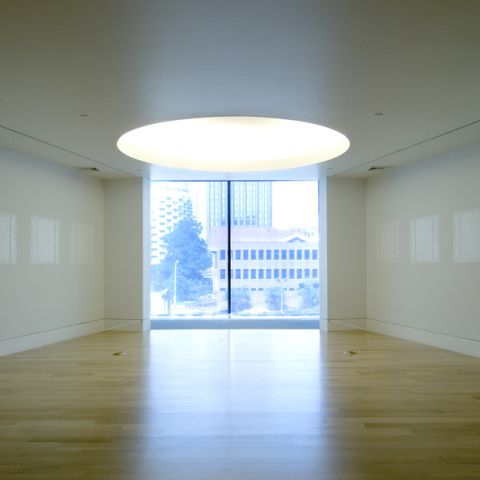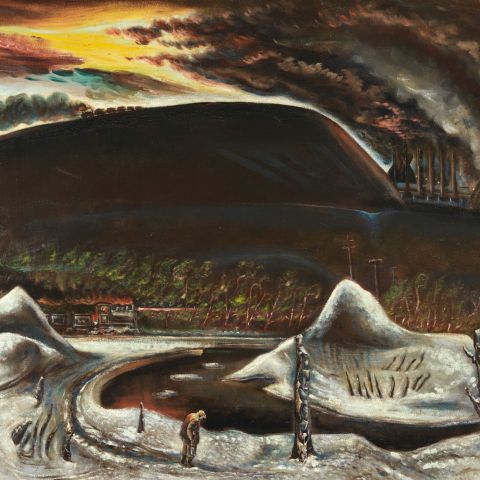To Almost Tell
Carla Lombardi '83, an artist and ceramicist, lived and worked in the Philadelphia area since 1970 upon her immigration from Europe. In the summer of 2019, Carla passed away. Initially an oil painter, Lombardi was accidentally introduced to ceramics and worked exclusively in clay until her passing in 2019. To Almost Tell includes a diverse selection of Lombardi’s prolific oeuvre, ranging from her 1995 MFA thesis series for Temple University to more recent pieces from 2018-19. Lombardi’s MFA in ceramics culminated in a series of clay figures whose human forms are subsumed by landline telephone receivers. The sculptures playfully and cynically represent the invasion of technology into the human experience, a point of concern and social critique that is increasingly apt today. More recent work showcases her dexterity in clay as well as her painterly background. For example, Lombardi’s freestanding sculptural theaters are complete with kinetic doors, working light fixtures, interchangeable whistle characters, and applied figural and architectural imagery. These stages offer moments that suggest larger, unseen, perhaps infinite, storylines that are playful yet sensitive, humorous yet earnest.
Bettina Nelson '13 is a Philadelphia-based artist whose practice prioritizes paper-based works that thoughtfully yet unselfconsciously combine abstraction, figuration, and the possibilities of the provisional. To Almost Tell features pieces from two bodies of Nelson’s work: colorful mixed-media collages and monochromatic graphite drawings. The collages take place in the structure of an open book, with the facing pages offering the format of diptychs. Similar to Lombardi’s stages, the open-book defies standard expectations of the resolution, because it suggests a continuing story that will always remain unseen. These collages deploy non-local color and the ambiguity of abstract forms and gestures, while also suggesting the specificity of a certain place and time. Nelson’s drawings offer more legible forms than the collages, however, the soft-edges and haziness caused by erasure and smudging allow these pieces to remain non-insistent on a specific narrative. Both Nelson’s collages and drawings evoke the suspension of the self in the subconscious world of ideas and stories and make analogies to the feelings of passing through a dream or being on the brink of a memory.
Maisie O’Brien '16 is a local, multidisciplinary artist whose work constructs composite mythologies that are both personal and universal. O’Brien’s recent stop motion animations are tactfully rhythmic and offbeat in both the mechanics of their literal movement and also their evocative imagery. These animations synthesize sensitive mixed-media collages that showcase O’Brien’s skills in materials such as oil paint, watercolor, ink, and chalk, and shadow puppets that are also on view. The resulting sequences—while making oblique and cheeky references to pre-existing historical narratives, creation stories, and intercultural mythologies—are illustrative but elude simple explanation. One is persuaded to enter the logic of the animations whose uniquely symbolic imagery and lack of obvious narrative create poetic spaces to further imagine O’Brien’s mythologies.






